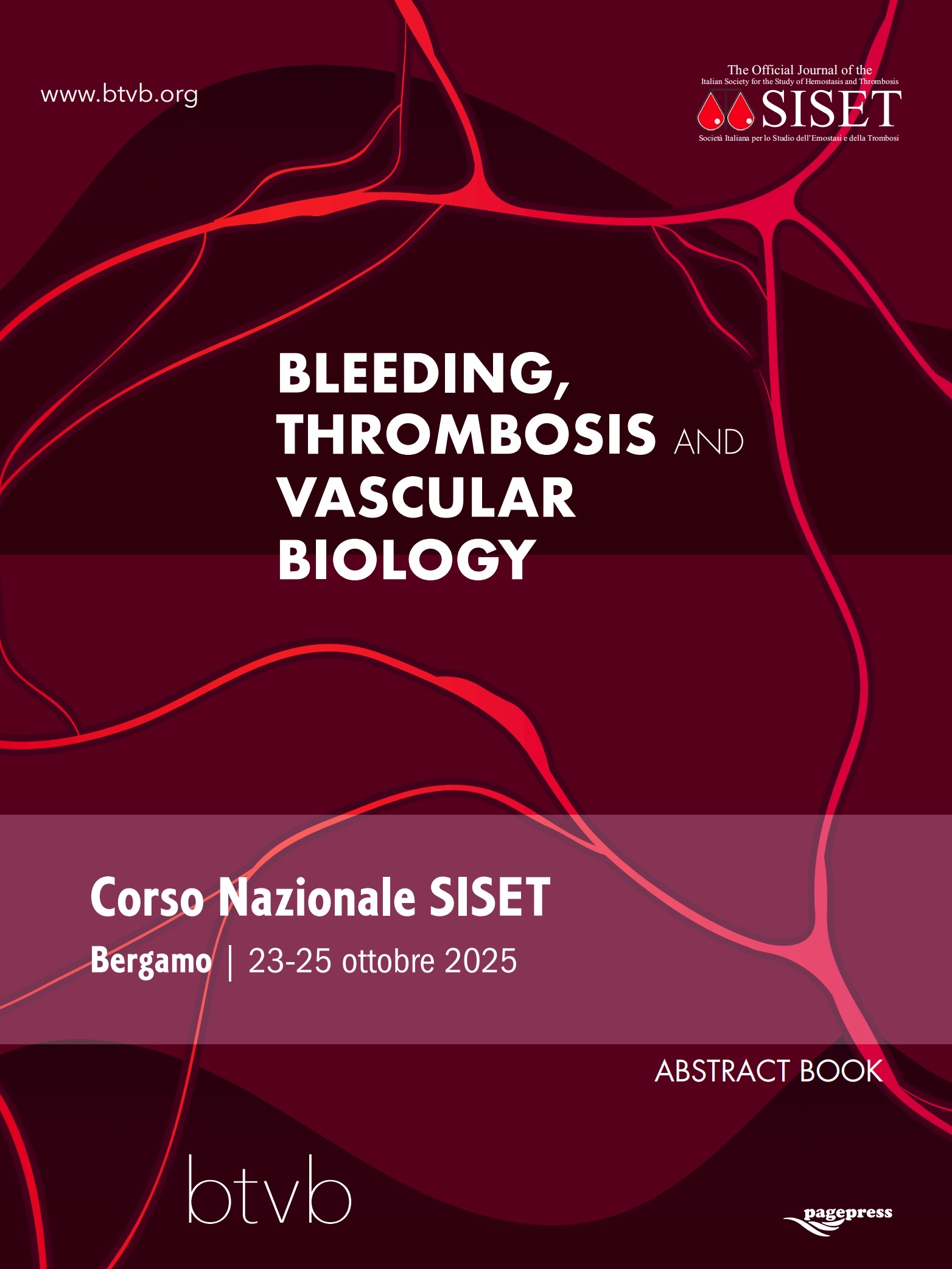29th National Conference of the Italian Society for the Study of Hemostasis and Thrombosis, 2025
Vol. 4 No. s1 (2025)
CO10 | Multidimensional risk assessment of venous thromboembolism (risk): an observational study comparing the Padua prediction score, Barthel index, and quality of life in hospitalized patients
A. Mameli, S. Cornacchini, P. Schirru, F. Marongiu, D. Barcellona | Hemostasis and Thrombosis Unit, University of Cagliari, Italy
Publisher's note
All claims expressed in this article are solely those of the authors and do not necessarily represent those of their affiliated organizations, or those of the publisher, the editors and the reviewers. Any product that may be evaluated in this article or claim that may be made by its manufacturer is not guaranteed or endorsed by the publisher.
All claims expressed in this article are solely those of the authors and do not necessarily represent those of their affiliated organizations, or those of the publisher, the editors and the reviewers. Any product that may be evaluated in this article or claim that may be made by its manufacturer is not guaranteed or endorsed by the publisher.
Published: 22 October 2025
43
Views
0
Downloads
Similar Articles
- CO02 | Hepatic fibrosis as predictor of cancer-associated thrombosis in patients with intrahepatic cholangiocarcinoma , Bleeding, Thrombosis and Vascular Biology: Vol. 4 No. s1 (2025)
- CO07 | Real word management of anticoagulant therapy in brain metastasis: moving toward a multidisciplinary approach in complex cases , Bleeding, Thrombosis and Vascular Biology: Vol. 4 No. s1 (2025)
- Stefania Cavazza, Gualtiero Palareti*, Still unmet problems with low molecular weight heparin prophylaxis of venous thromboembolism. An Italian survey , Bleeding, Thrombosis and Vascular Biology: Vol. 4 No. 3 (2025)
- Roger Lijnen, Désiré Collen, The key to fibrinolysis and thrombolysis , Bleeding, Thrombosis and Vascular Biology: Vol. 4 No. 3 (2025)
- PO43 | Extended treatment with reduced dose of direct oral anticoagulants in patients with venous thromboembolism: a retrospective study , Bleeding, Thrombosis and Vascular Biology: Vol. 4 No. s1 (2025)
- CO16 | The predictive value of high-sensitivity C-reactive protein for assessing thrombosis risk in non-small cell lung cancer , Bleeding, Thrombosis and Vascular Biology: Vol. 4 No. s1 (2025)
- PO08 | Efficacy and safety of thromboprophylaxis in hospitalized hematological patients: a monocenter retrospective study , Bleeding, Thrombosis and Vascular Biology: Vol. 4 No. s1 (2025)
- Daniela Tormene, Elena Campello, Chiara Simion, Anna Poretto, Paolo Prandoni, Paolo Simioni, Combined oral contraceptives and the risk of venous thromboembolism carriers of antithrombin, protein C or S deficiency: Sub-analysis of a prospective cohort study , Bleeding, Thrombosis and Vascular Biology: Vol. 1 No. 3 (2022)
- Anna Maria Gori, Eleonora Camilleri, Alessia Bertelli, Angela Rogolino, Francesca Cesari, Elena Lotti, Tommaso Capobianco, Walther Iannotti, Betti Giusti , Rossella Marcucci, Pleiotropic effects of anti-thrombotic therapies: have direct oral anticoagulants any anti-inflammatory effect? , Bleeding, Thrombosis and Vascular Biology: Vol. 1 No. 3 (2022)
- Jingnan Huang, Delia I. Fernández, Jinmi Zou, Xueqing Wang, Johan W.M. Heemskerk, Ángel García, Restrained glycoprotein VI-induced platelet signaling by tyrosine protein phosphatases independent of phospholipase Cγ2 , Bleeding, Thrombosis and Vascular Biology: Vol. 2 No. 3 (2023)
You may also start an advanced similarity search for this article.








